The Making of Snaiad
Snaiad started out as a hobby and it still is a hobby; it is not the only thing I devote my time to, nor do I get anything other than a pleasant experience from it. Still, I spend a lot of time on Snaiad. Here is a very brief overview of the Snaiadi "pipeline," from the initial cladograms to sketches and full-color paintings.
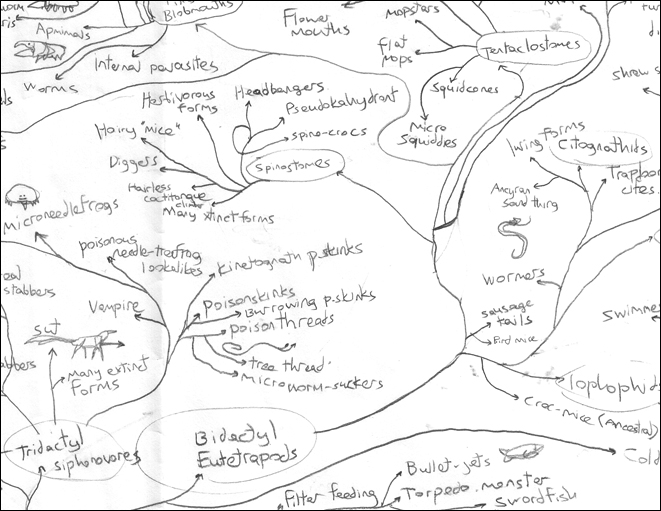
Everything begins with complex cladograms I scribble down on large sheets of paper. Before any pictures, these family trees serve as the "backbone" of the project; allowing me to develop the relationships among different animals and derive ideas from one another. This is a section from a very early cladogram, I scrap and revise a lot of them before starting to draw.
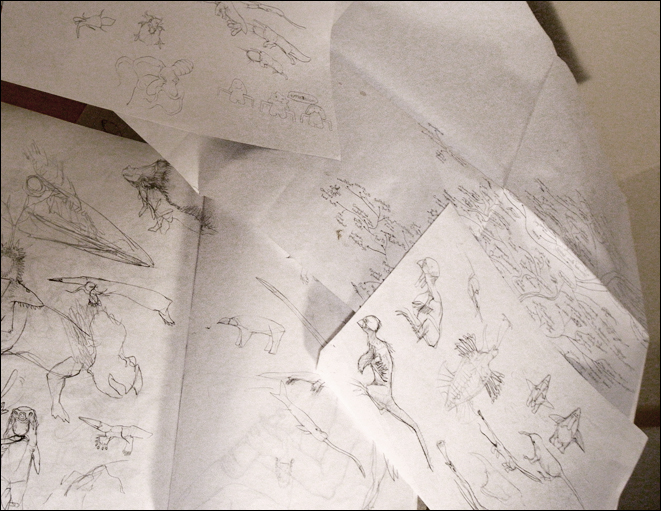
Sketches follow cladograms. I "cherry pick" different animals from the complex cladograms (drawing them all would be impossible unless I was paid full-time to do it.) and doodle away. Some of the sketches you see here are related to Snaiad, others are obviously not.

After I'm satisfied with the sketches, I start work on the paintings.

All paintings start life as a pencil outline on smooth, heavy Bristol paper. This is a heavyweight herbivore called Ungelephas. It belongs to a yet-unpublished group of plant eaters.

I then proceed to draw the highlights and shadows on the animal with water-soluble pencils.
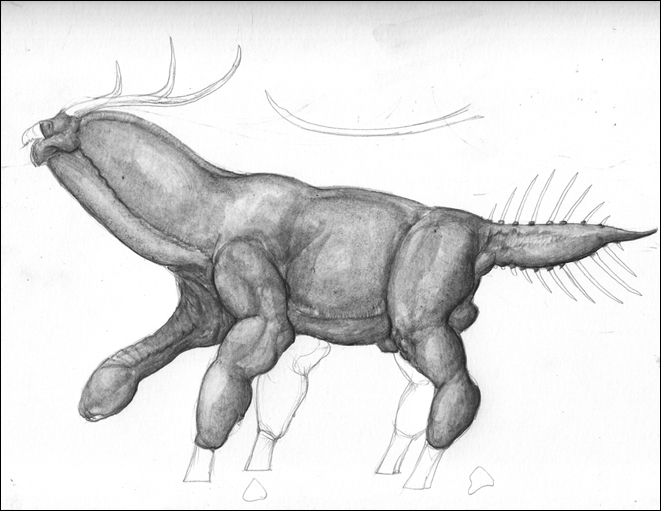
I use water-soluble pencils because after a while, I soak the pencil shading with a special mixture of water and saliva to get this "back painting". It might sound disgusting, but I've discovered that human saliva gives water-pencils a thick, acrylic-like texture that water alone cannot achieve.

I let the saliva-painting dry and then move in with pencils; real, mechanical ones, to draw the details and some of the textures. At this point the painting looks fairly complete, but this is only half of the process yet.
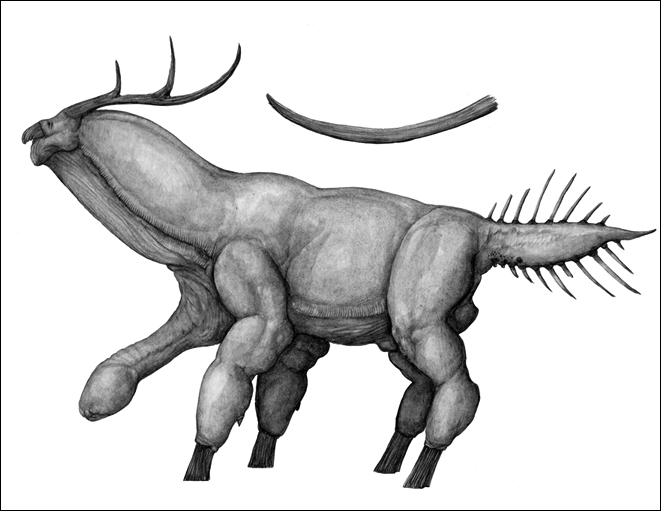
The other half of the painting begins when I scan the image and "clean out" the negative spaces digitally.
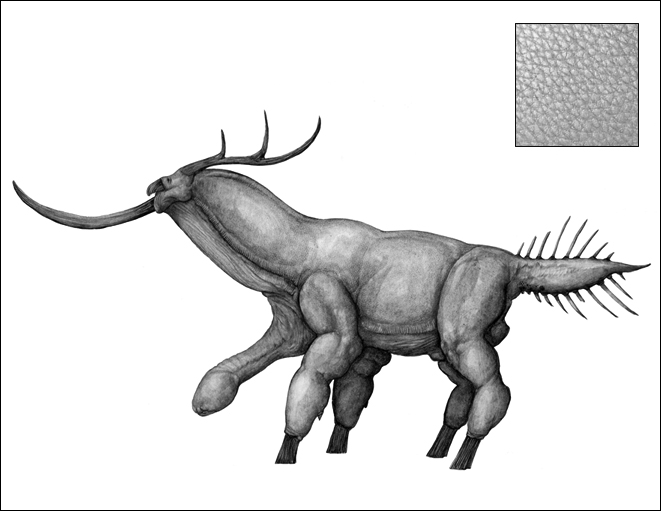
After the cleaning, composition. I tweak the painting's proportions slightly to make it look more balanced. Sometimes, like in this case, I do a little cut-and-paste work, like mounting the long "spike" onto the animal's beak. But the most important addition in this phase is the application of textures, from an archive I've gathered over several years. Here, the surface of a dark leather chair is layered over the animal's back, making it look more realistic.
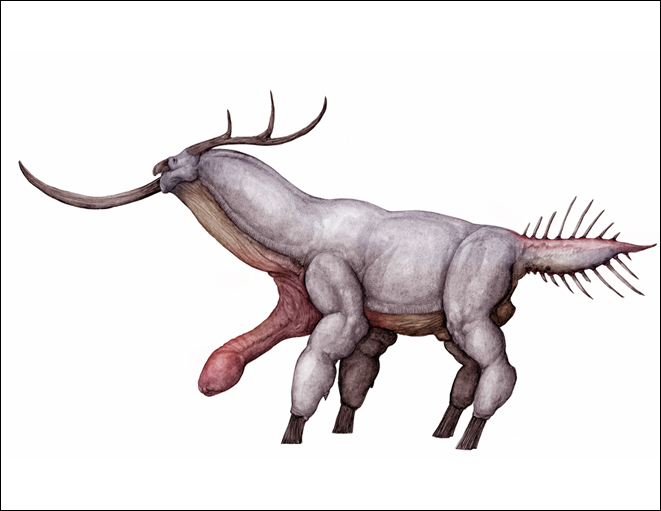
At the very end, I flatten all the textures into one black-and-white painting and then proceed to colorize it digitally, using Photoshop's brushes set to "soft light," and the "variations" tool. It takes a long time, but the results really pay off.
Copyright laws protect all intellectual property associated with Snaiad.
All artwork, concepts and names associated with this project belong to C. M. Kosemen, unless otherwise stated.